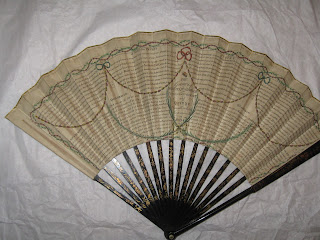 |
| Reproduced with permission of the Dublin City Library and Archive (click to enlarge) |
Although no printing location is given, the pamphlet was clearly written in Dublin. The book is styled a preface to The Polite Gamester, which as we have seen, was the Dublin title for Hoyle's treatises. Further, the note "To the Printer" is signed "Jeff Humbugg, Bardin's Chocolate House, May 8, 1752". Peter Bardin, an actor, established a Chocolate House in Fowne's Court, Dublin—it was converted into a post office in 1755. (Gilbert, as in the J. T. Gilbert Collection, Vol. II, pp. 320-1)
Two competing Dublin editions of The Polite Gamester had appeared in February 1752 (ESTC N22882 and N24780), perhaps prompting this preface. The story of those books and the competition between them will have to wait for another time.
The book begins with the pseudonymous Humbugg lauding Hoyle:
His book, though small in size, is yet weighty as to its contents and was the produce of a long series of practice and close application (p. 8)Then he complains about the difficulty of portions of the text:
At first sight, and to the young beginner, or mere novice he will appear a little difficult. I remember myself, and I honestly declare it, that at first dipping into him, I did not enter into the true spirit and meaning of many passages. (pp. 8-9)More importantly, Humbugg, argues, the reading must be supplemented with expensive experience, by which he means expensive losses at gaming. The solution is ingenious, consisting of two strands. The first is:
"To have a number of schools erected at the public charge, in the several cities and large towns of this kingdom; where, under the direction of experienced, and able masters, the several games may be taught (p. 10-11)The more amusing suggestion is that:
...the youth of both sexes [be] made perfect by going through a complete course of experiments; in the performance of which they shall play only with the public money; and thus the people of lower rank, will have an opportunity of sending their children that they may learn to game with reason and judgment. (p. 11)Gaming with public money? I'll leave it to the reader to make twenty-first century analogies with sub-prime lending.
The Humbugg piece is the first satire I have seen suggesting schools for gaming, but others followed. The periodical The Connoisseur included a quite similar piece in the issue of March 20, 1755:
The education of females is at present happily elevated far above the ordinary employments of domestic œconomy; and if any school is wanted for the improvement of young ladies, I may venture to say, it should be a school for whist. Mr. Hoyle used, indeed, to wait on ladies of quality at their own houses to give them lectures in this science: but as that learned master has left off teaching, they can have no instructions but from his incomparable treatise; and this, I am afraid, is so abstruse, and abounding with technical terms, that even those among the quality, who are tolerably well grounded in the Science, are scarce able to unravel the perplexity of has cases, which are many of them as intricate as the hardest proposition in Euclid. A school for whist would, therefore, be of excellent use; where young ladies of quality might be gradually instructed in the various branches of lurching, renouncing, finessing winning the ten-ace, and getting the odd trick, in the same manner as common misses are taught to write, read, and work at their needle.
Another periodical, The World, included the following letter on May 20, 1756:
When [my son] had finished his studies at the university, and perfected himself in town in all the necessary accomplishments of a young man of fashion, I sent him under the direction of a very excellent tutor, on his travels through France, Italy and Germany; from which, after an absence of four years, he returned last winter, improved beyond my utmost hopes.
But, alas, sir! when I expected to see him the admiration of all companies, and to have been ever where congratulated on the happiness of having such a son, I found, from the universal attention to cards, that his acquirements were totally unnoticed, and that all the cost and trouble I had been at in his education, answered no other purpose than to make him company for himself, and a few unfashionable friends who have no commerce with the world.
If this insatiable passion continues, it were as well if our public schools and universities were abolished, and that travel and all other means of acquiring knowledge and refinement were at once prohibited; and in their places, other seminaries erected in this metropolis, and proper masters appointed, to instruct our children in the rudiments of brag, cribbage and lansquenet, till they were of a proper age to study whist, and the other games of skill, at the academy of Mr. Hoyle.Yes, gaming was quite the rage in Dublin and London, with Hoyle was seen as the cornerstone to education.
References
J. T. Gilbert, A History of the City of Dublin, Dublin: McGlashan and Gill, 1859.


















